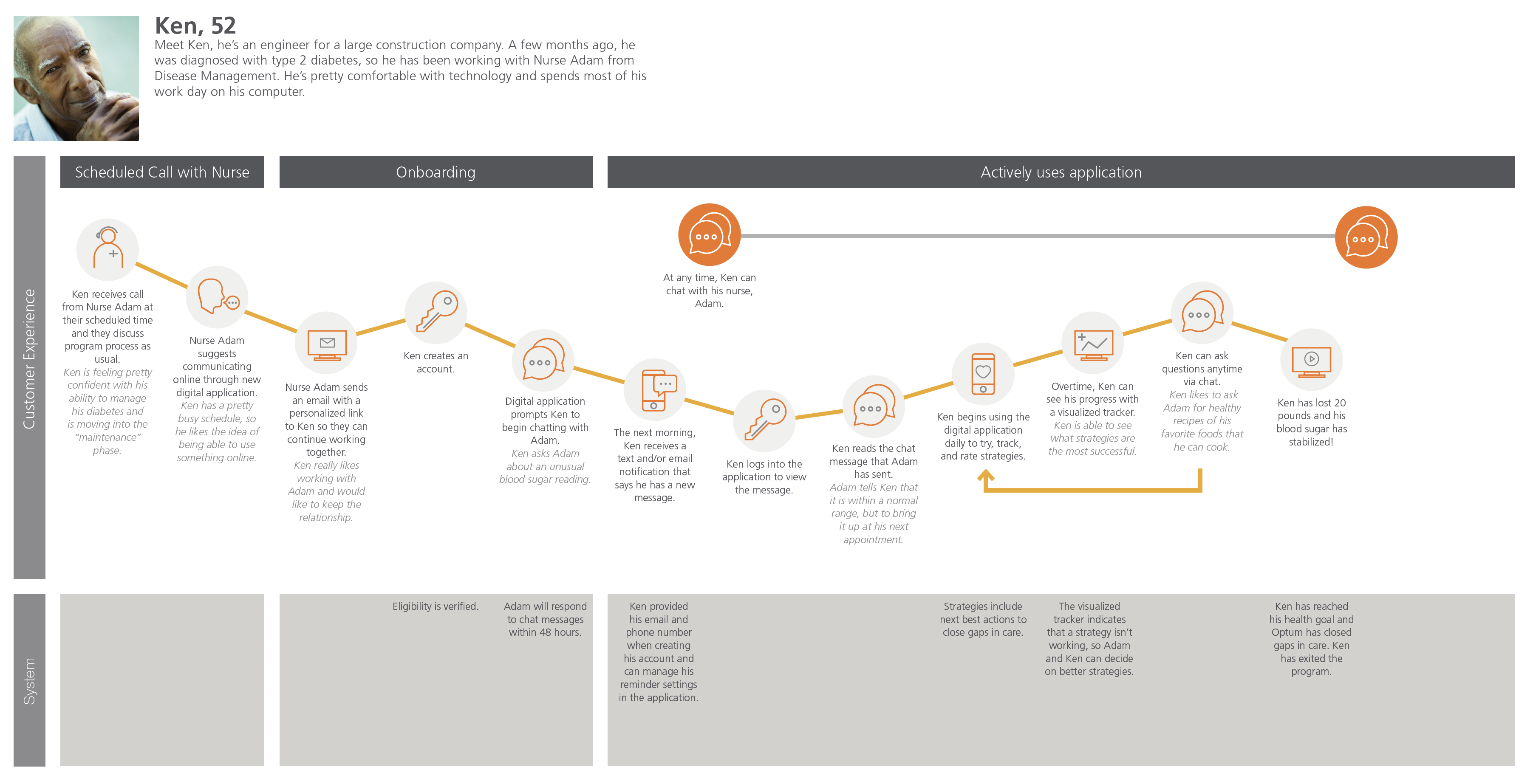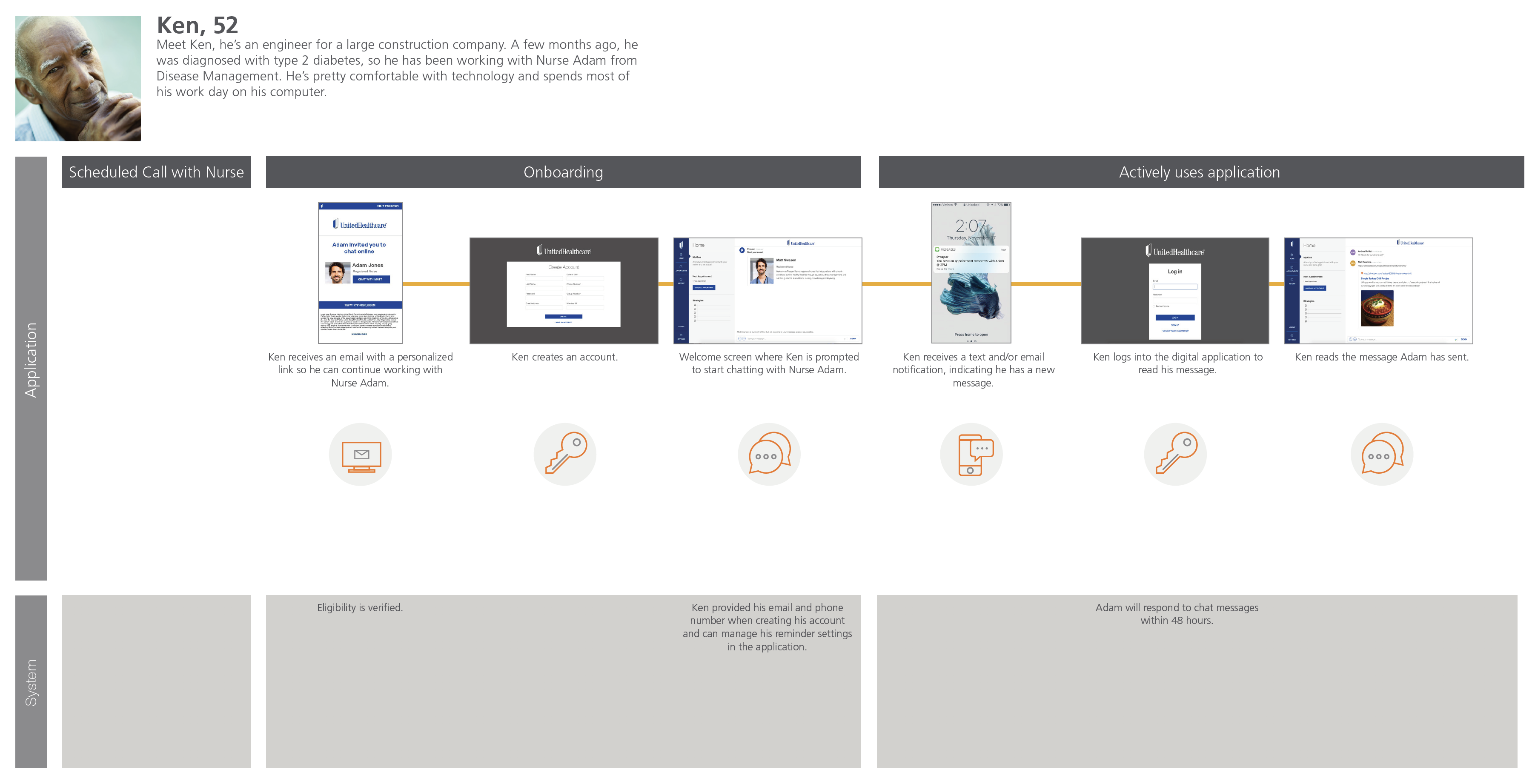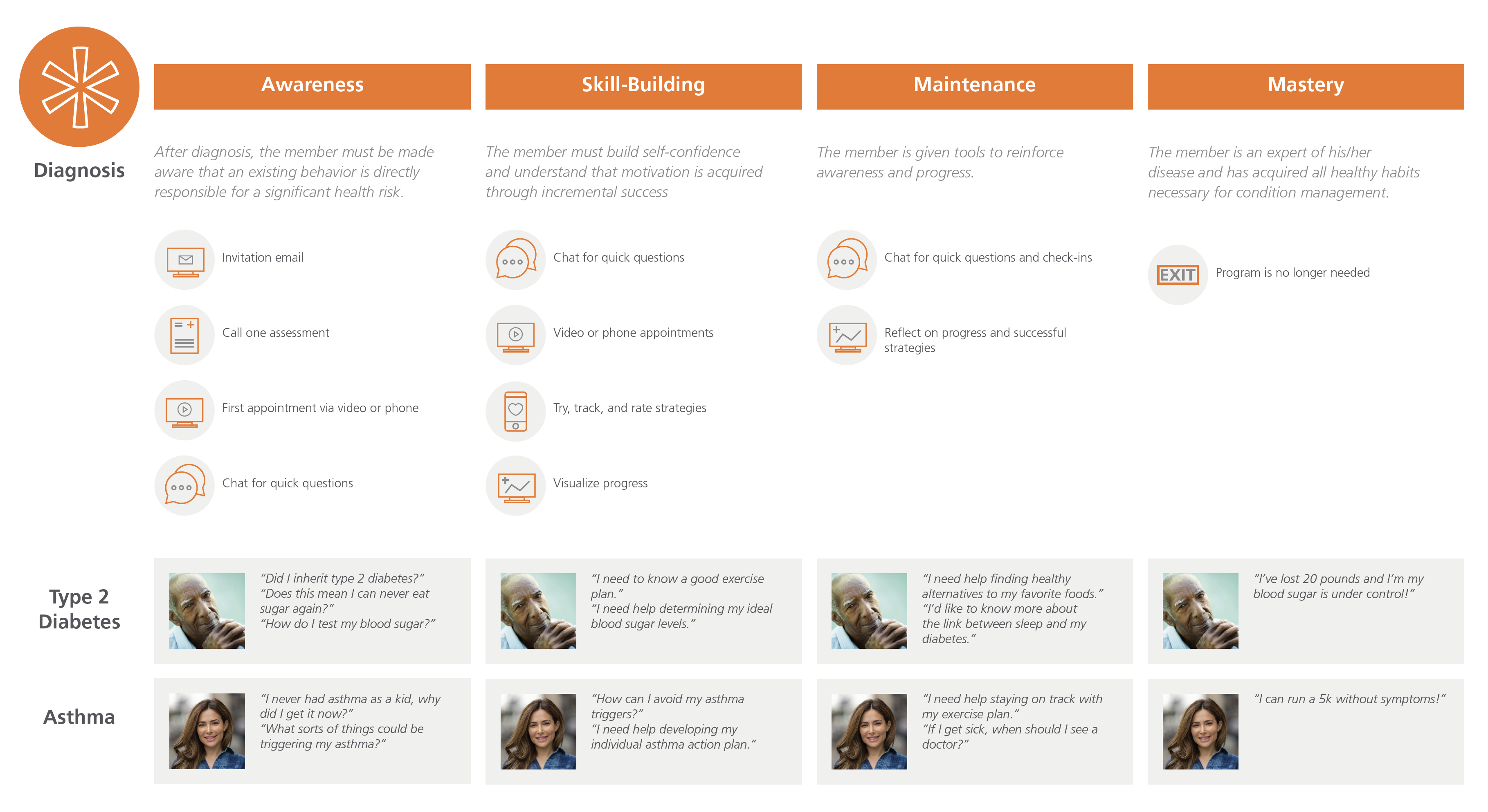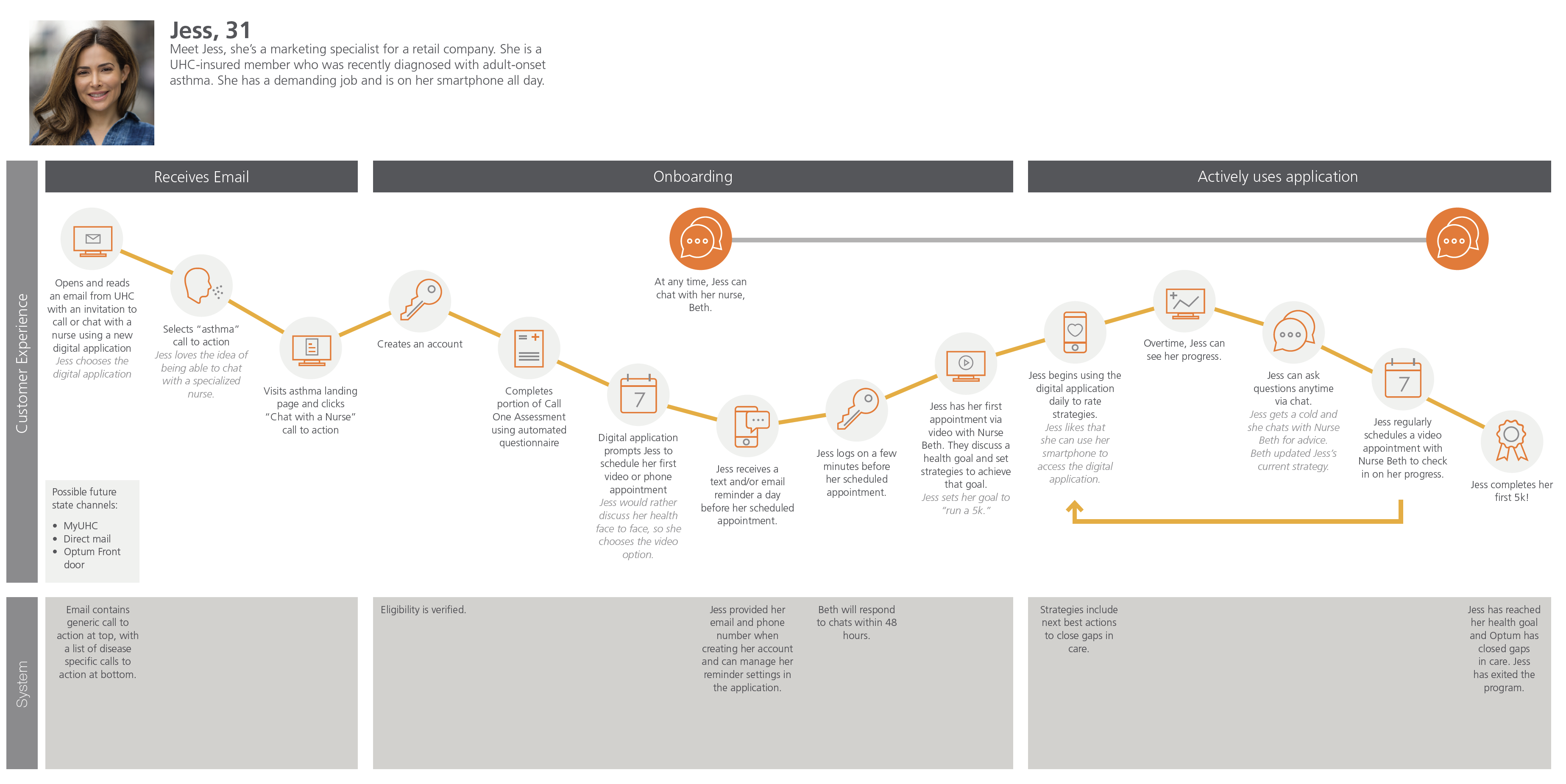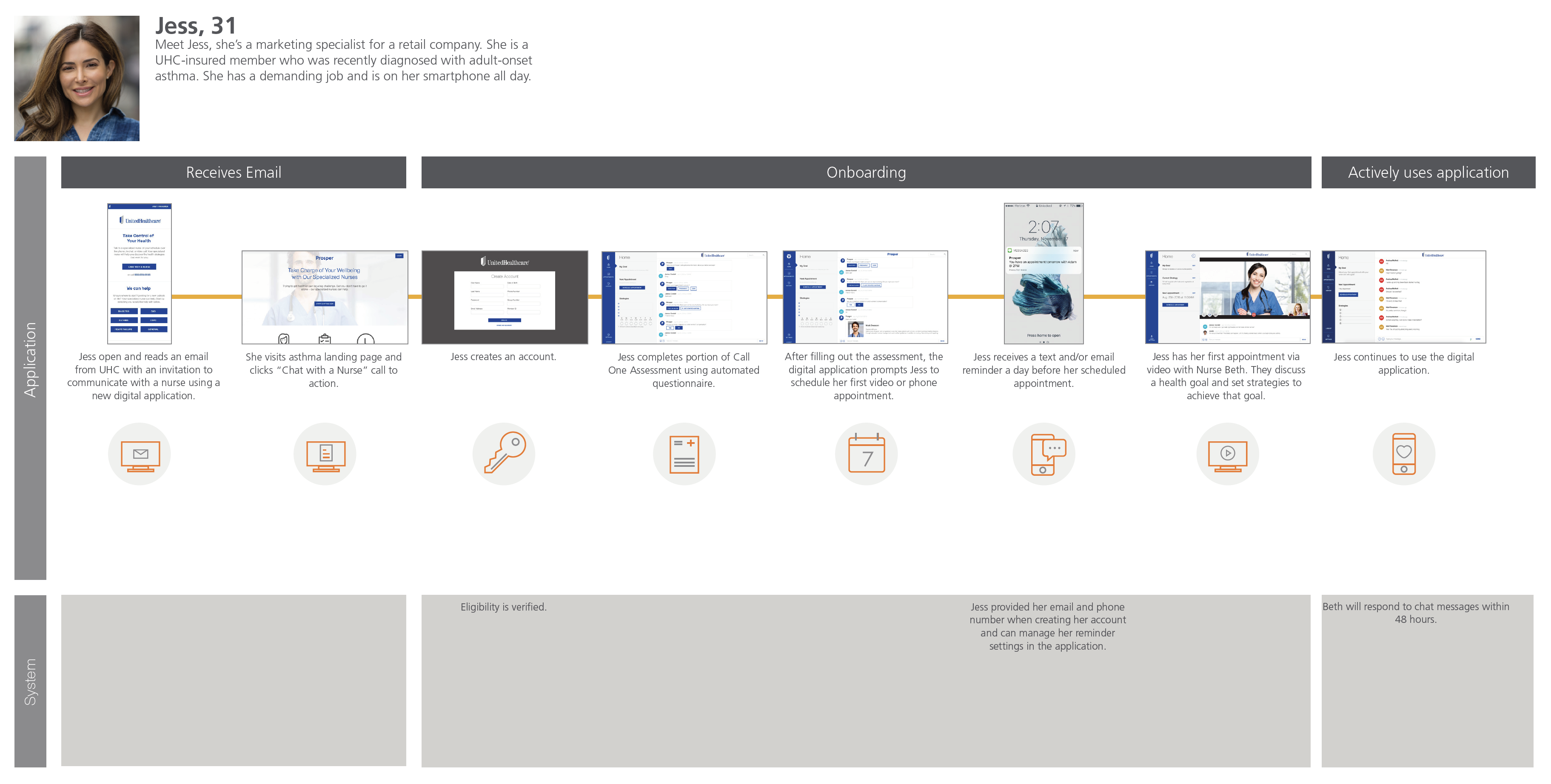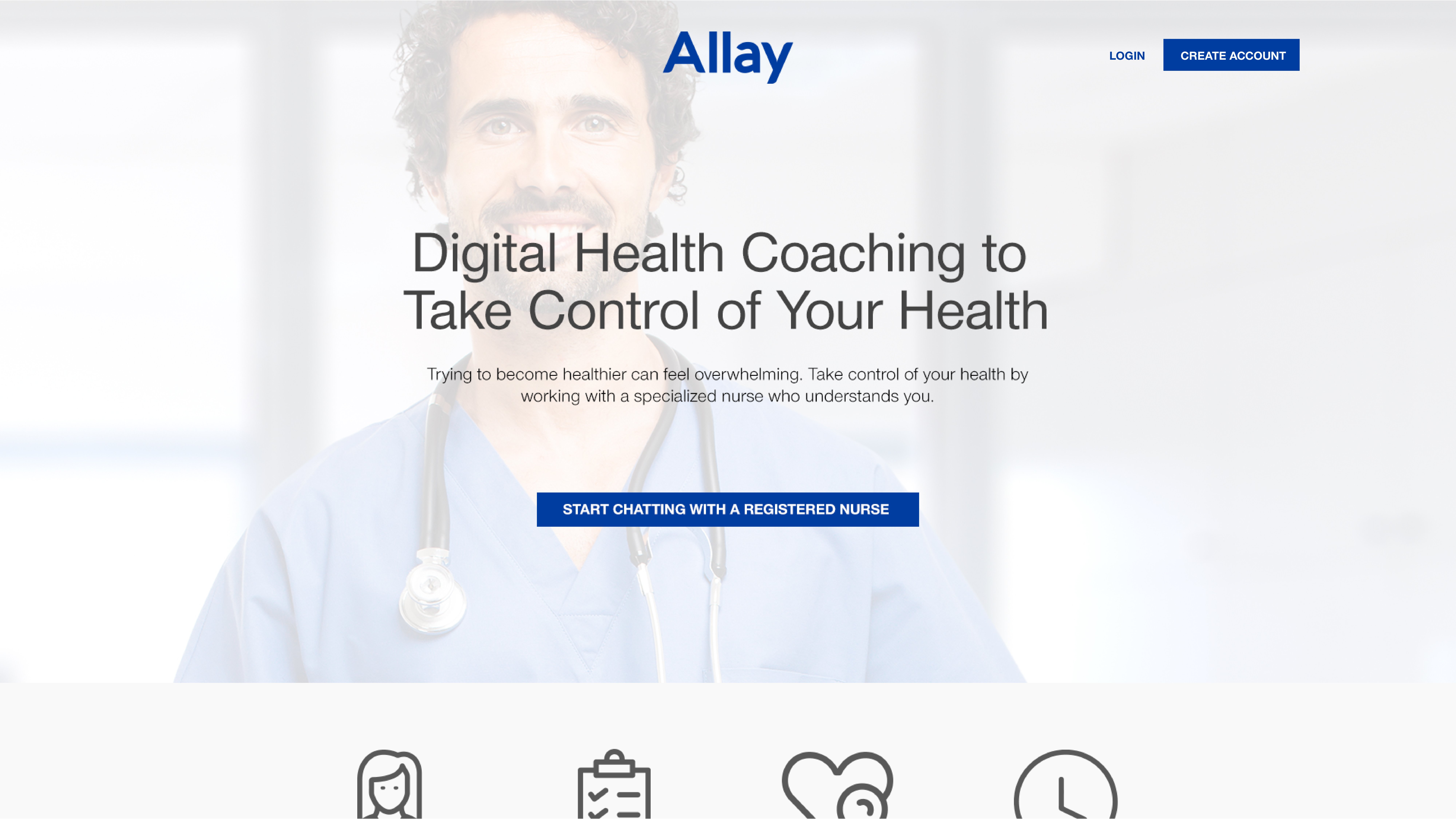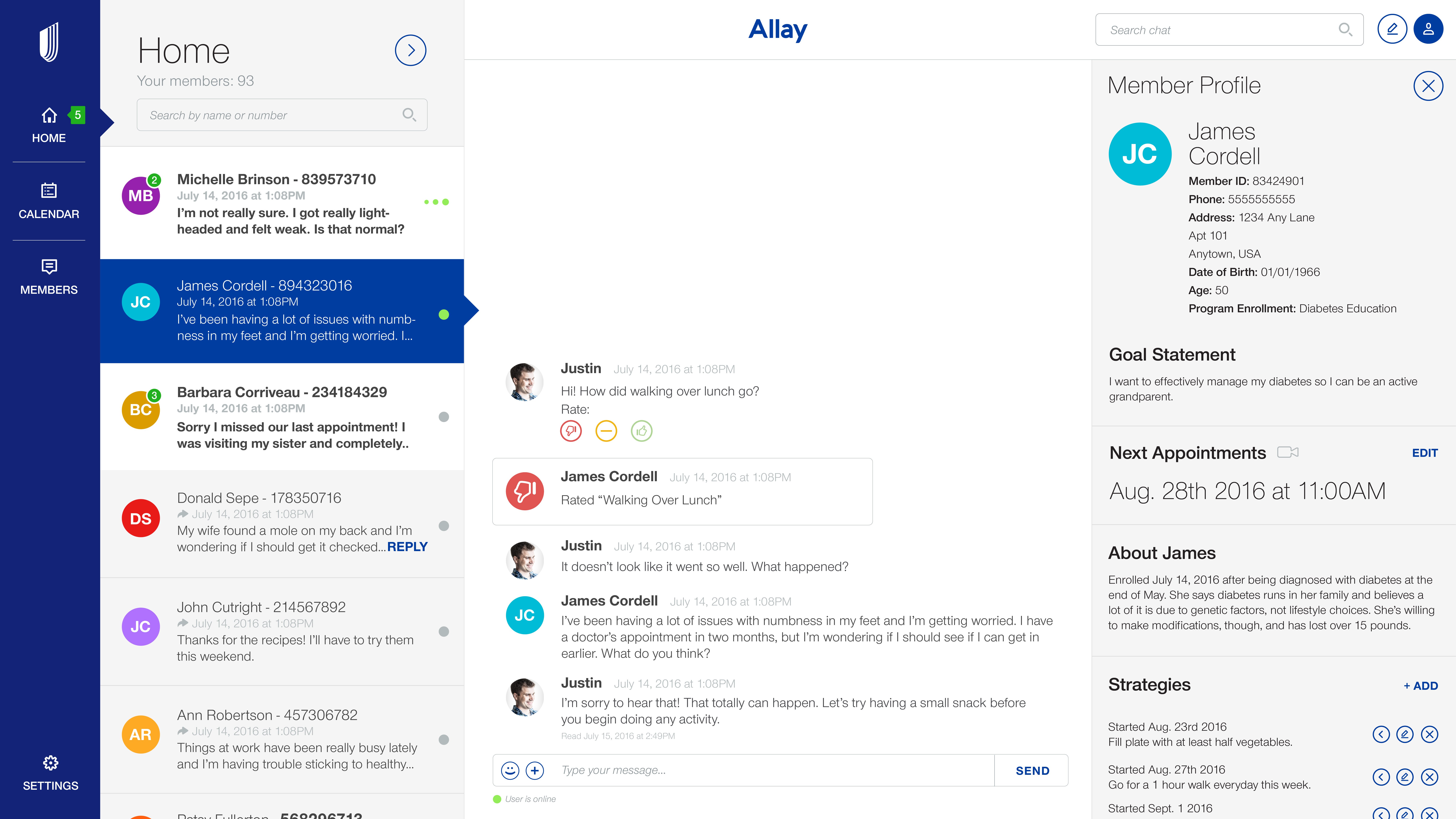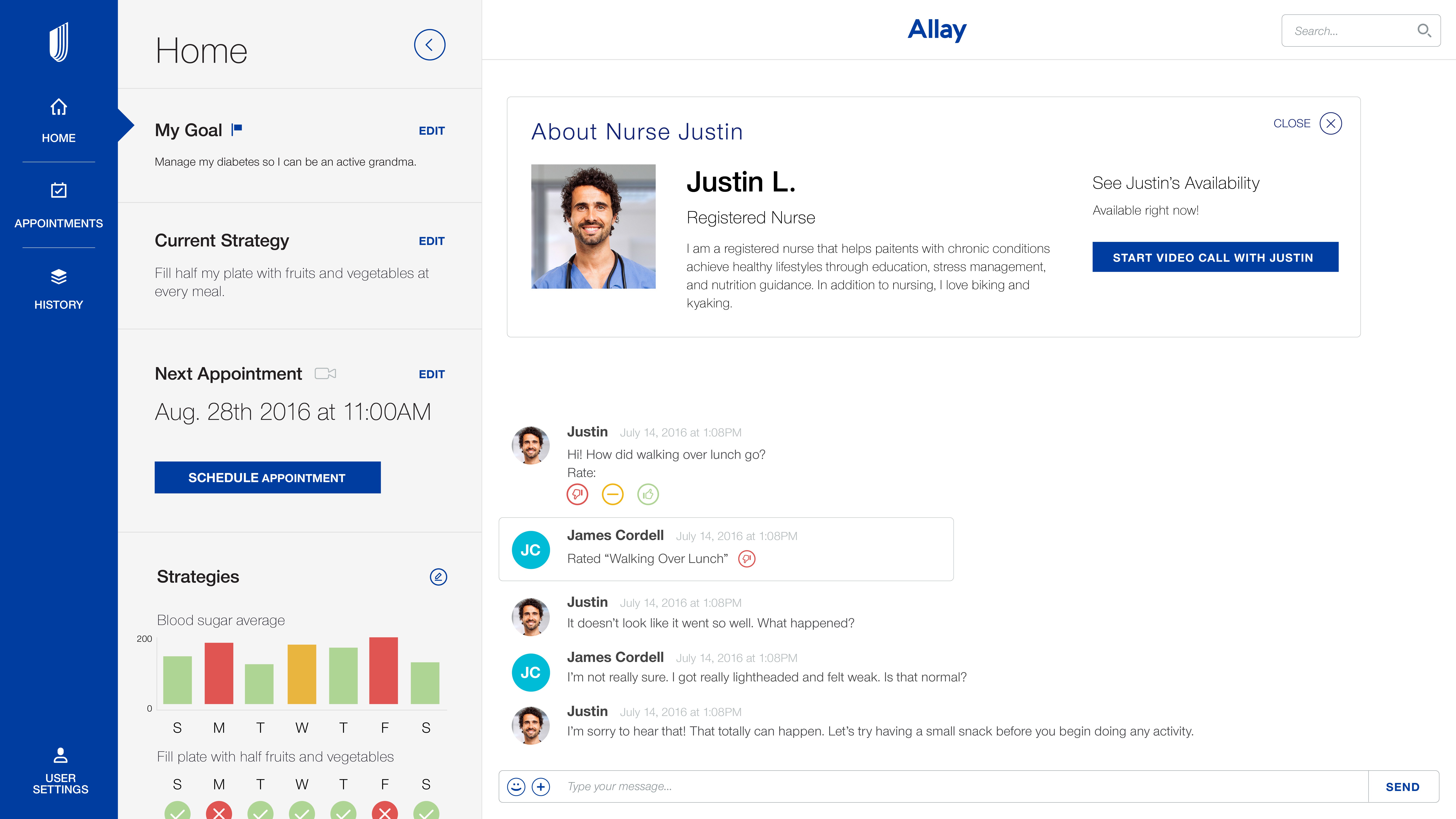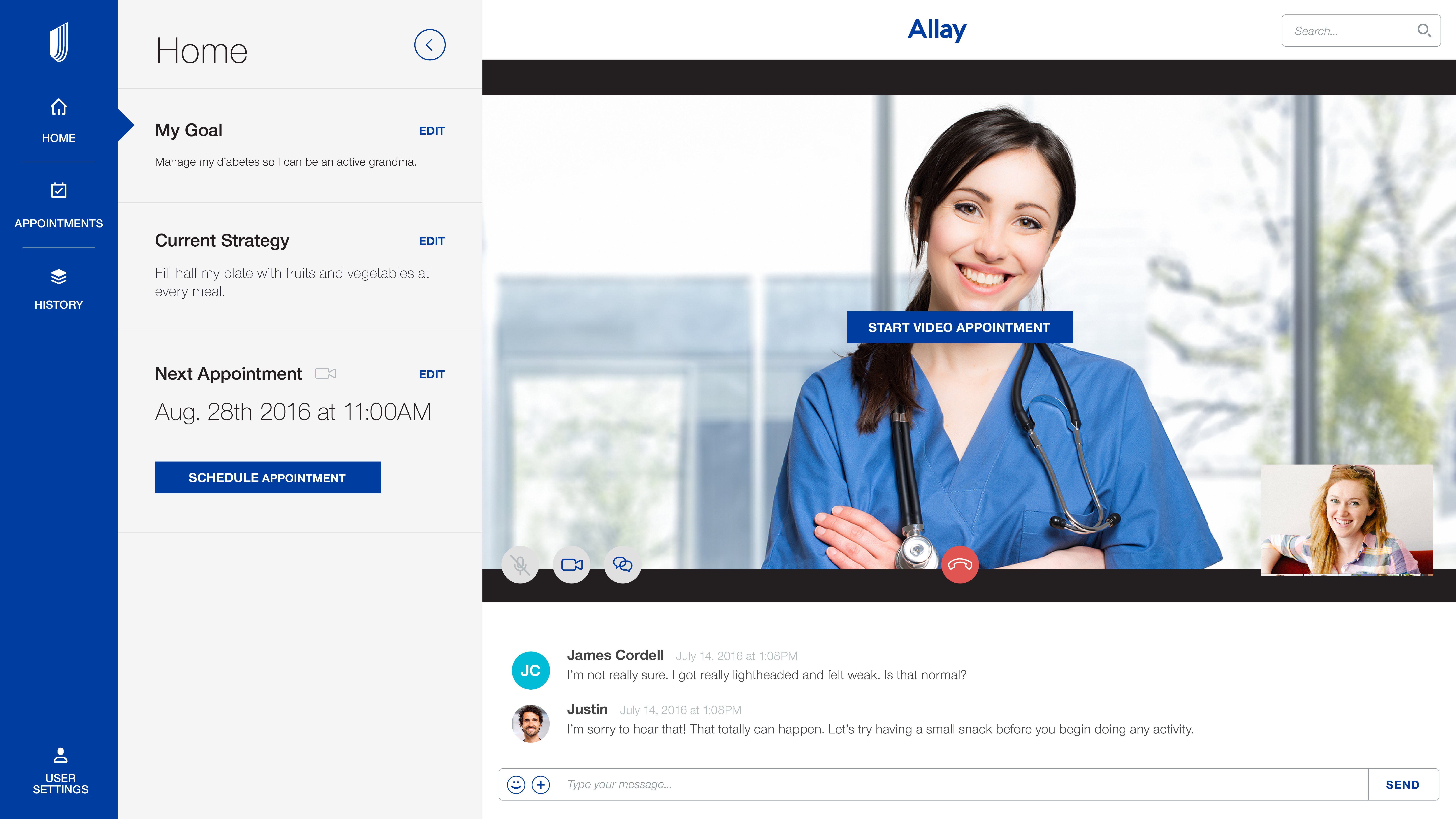The problem
Individuals facing chronic medical conditions often find themselves in an unfamiliar terrain, navigating the challenges of a new diagnosis. The experience can be daunting, marked by uncertainties and fear. Our objective was to create a tool that empowers these patients to thrive in the face of such circumstances.
My role: UX Designer
Understanding the current call experience

PHMI’s services must convince our members to adopt healthy behaviors that help reduce their medical expenses. Current analyses show that there is a connection between PHMI interventions and reduced medical expenses. However, margins are tightening, service delivery isn’t readily scalable, and member engagement is low. In addition, PHMI faces increasing competition in the marketplace from more robust services. Competitors offer more digital tools and omnichannel service deliveries that PHMI is unable to respond to in customer RFPs.
Project Goals
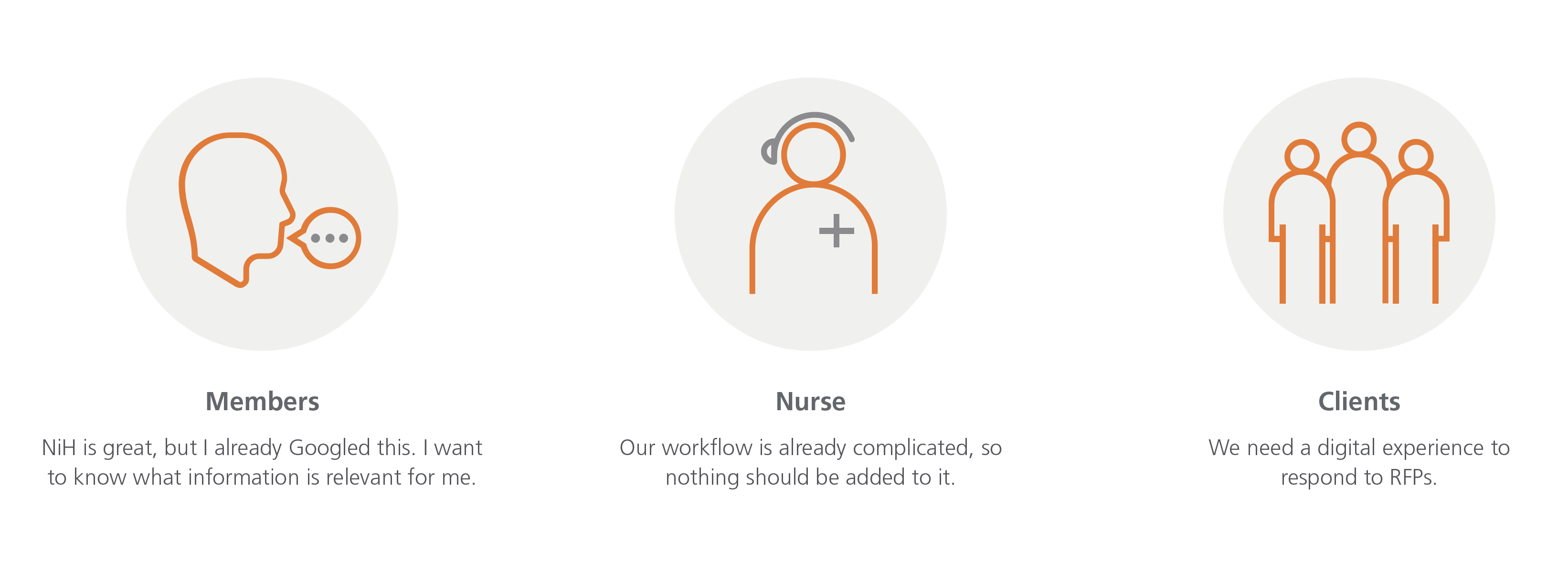
Initial interviews
Over two weeks, I interviewed nine people who had recently been diagnosed with a chronic life-changing disease. These 90-minute interviews were conducted inside the participants’ homes. I sought to understand how they experienced the diagnosis, how the disease changed their lives, their perceptions of their disease, previous attempts to change behavior, and how they approached goals and rewards.
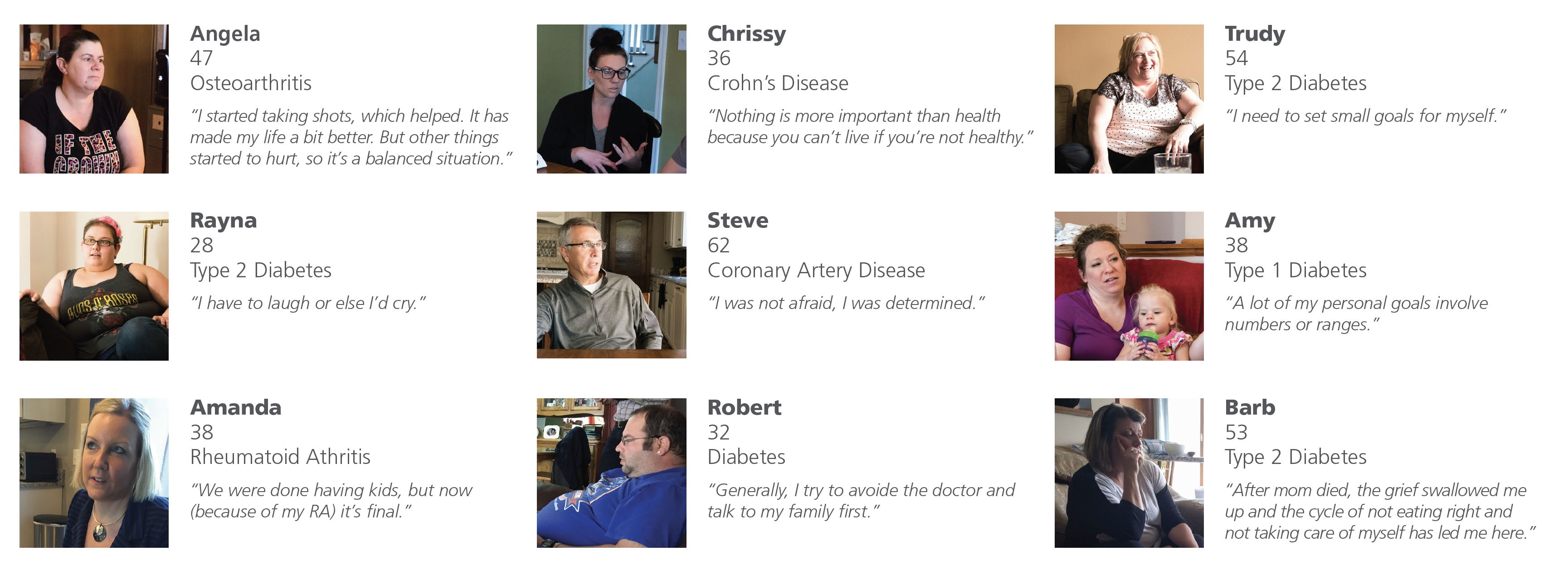
Storyboarding
Based on the interviews, I created concepts as storyboards. Storyboards walk through an experience from the member’s perspective and are used to stimulate conversation during testing with participants.
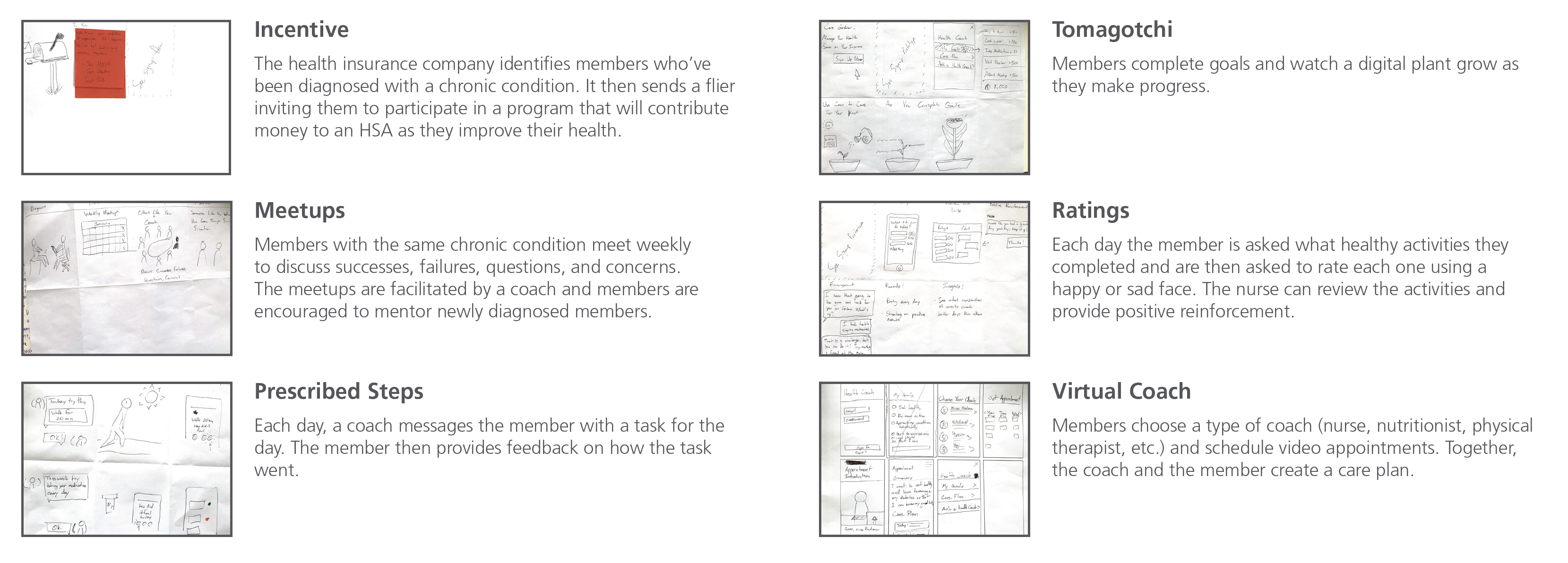
Liftoff: Thrive Prototype
Thrive was an early concept to quickly test live chat interactions between a person and an Optum nurse outside of a structured interview or testing set. We launched Thrive to a public URL and drove traffic using Google AdWords. Once on the landing page, a potential user could sign up for an account and chat with a nurse for free. An experienced Optum nurse staffed Thrive at set hours and responded to any messages that had been left or had conversations with anyone who was logged in.
I wanted to see what happened when people were able to chat with a nurse without constraints on their interactions.
This test revealed that a key service prioritized by our organization was not valued by our members. Optum had prioritized delivering health content from trusted sources to our members. However, modern search tools such as Google make it easy for our members to individually vet and verify health content. Therefore, Optum’s service seems repetitive to many members. Members are looking for the answer to “What do I do” not “Where should I go for information.”
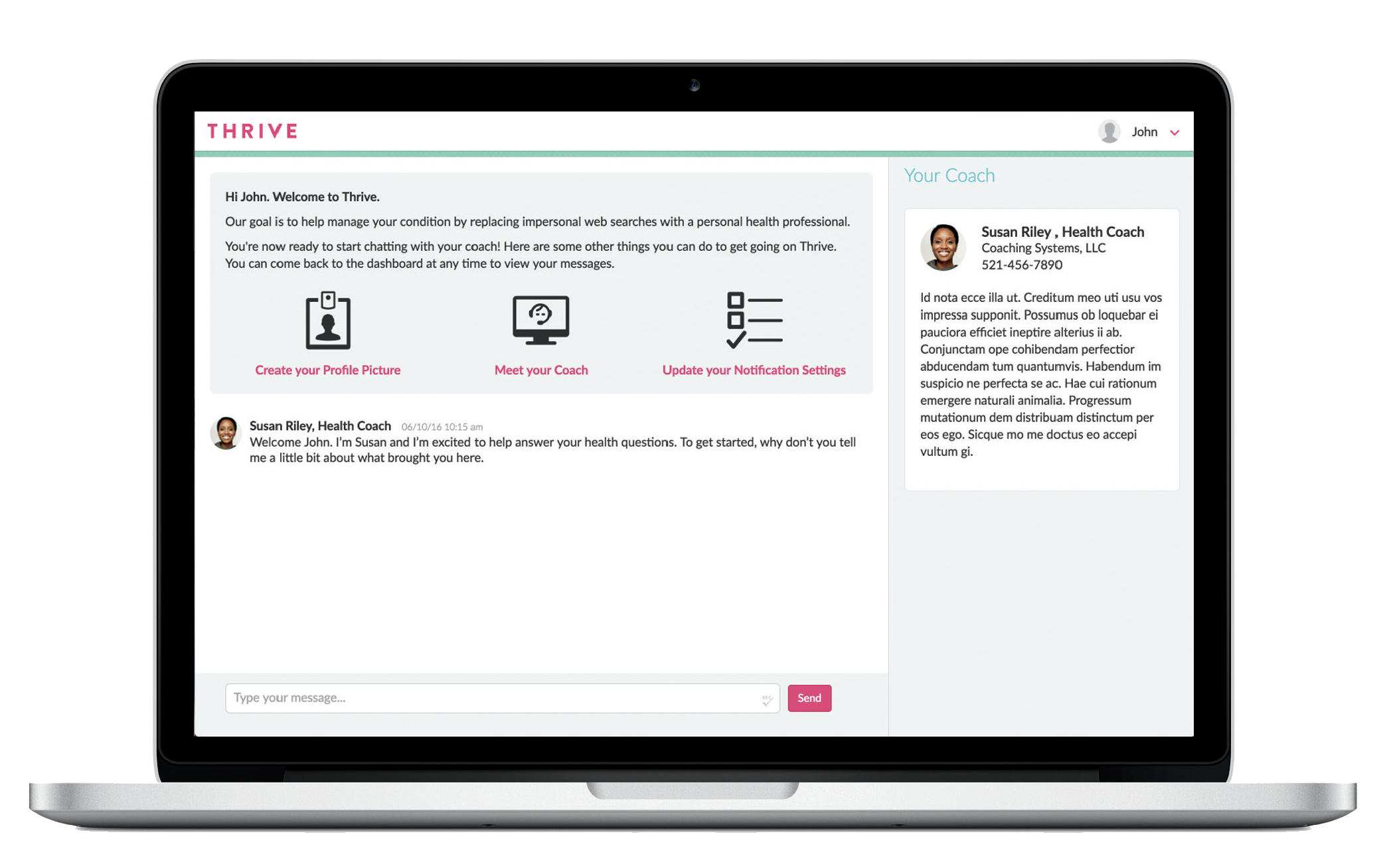
Thrive Insights
BEING DIAGNOSED WITH A CHRONIC CONDITION IS A LOSS. People need to grieve the loss of their former life.
Acceptance is a real definition of what their new version of “healthy” is. MANY NEVER FIND A NEW VERSION OF HEALTHY and continue living their lives as they did before.
People have more information than they need. THEY DON’T NEED TO KNOW MORE, they need to know what applies to them.
Once people know what applies to them, THEY NEED HELP SEEING PROGRESS.
People are OPEN TO CHANGE following a diagnosis. Helping people see how that change impacts their lives is critical to helping them get healthy.
People are often given specific directives on what to do about their chronic condition. They often find that the directives don’t work for them and find themselves in a failure loop, eventually giving up. PEOPLE NEED NON-JUDGEMENTAL SUGGESTIONS of strategies that also connect to their personal goals. That way, when something fails, it is the strategy that failed, not the person.
Summary of Learnings
User Testing

Step 1
Simple wireframes supplemented with Google hangouts to test chat and video service.
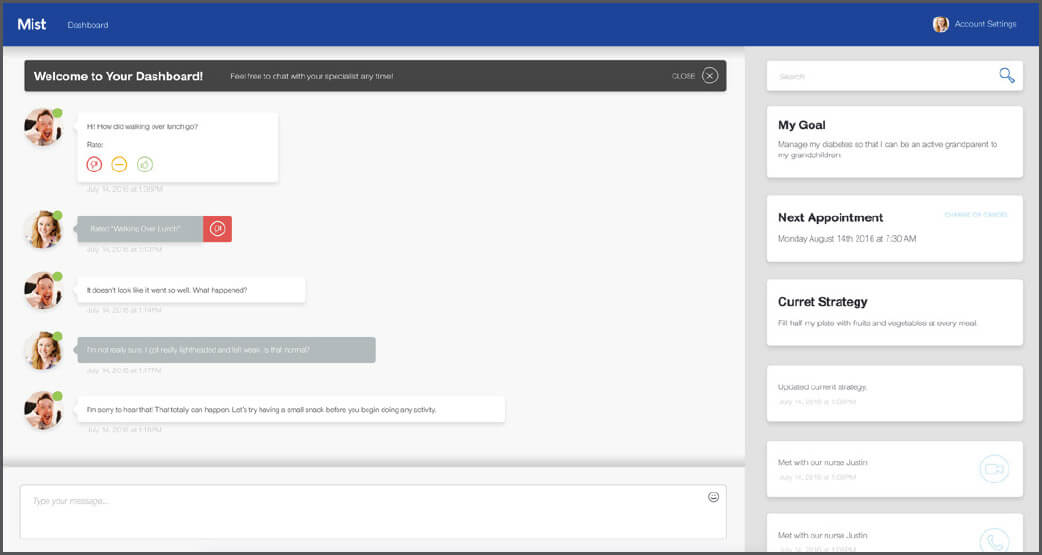
Step 2
Early UI mockups supplemented with Google Hangouts to test chat and video services.
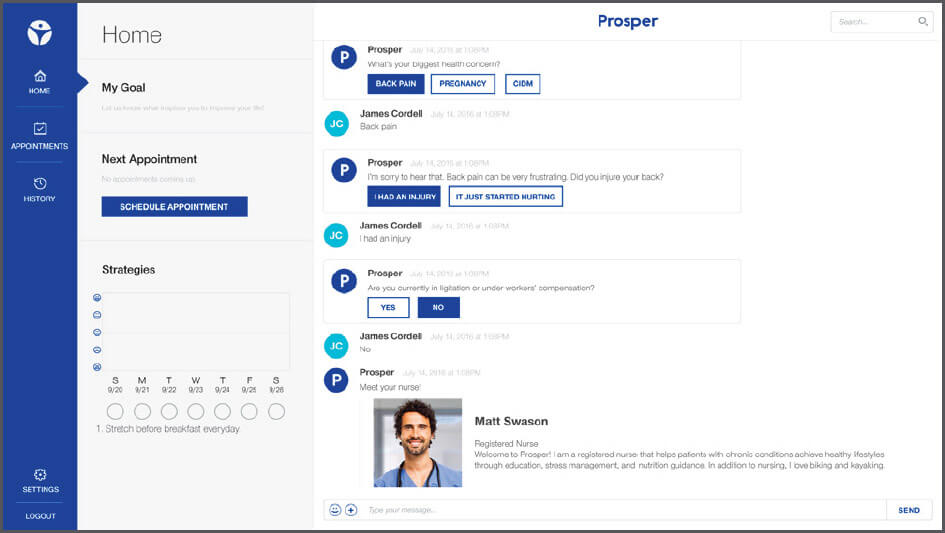
Step 3
Working application.
User Testing Insights
People NEED TO KNOW WHAT TO EXPECT from the landing page.
Meeting with a coach over a video is IMPORTANT TO QUICKLY ESTABLISH A RELATIONSHIP and efficiently use the member’s and coach’s time. But, for some people, a video call is too big a commitment to first contact.
Video chat is WEIRD AT FIRST but quickly becomes comfortable.
People NEED SOME FLEXIBILITY in how they begin engaging with a coach (chat, video, phone).
People NEED TO SEE A DESCRIPTION OF WHO THEIR COACH IS and his or her credentials.
People ARE SLOW AT CHATTTING but tend to be much more comfortable when chatting than on video and phone.
User Acceptance Testing
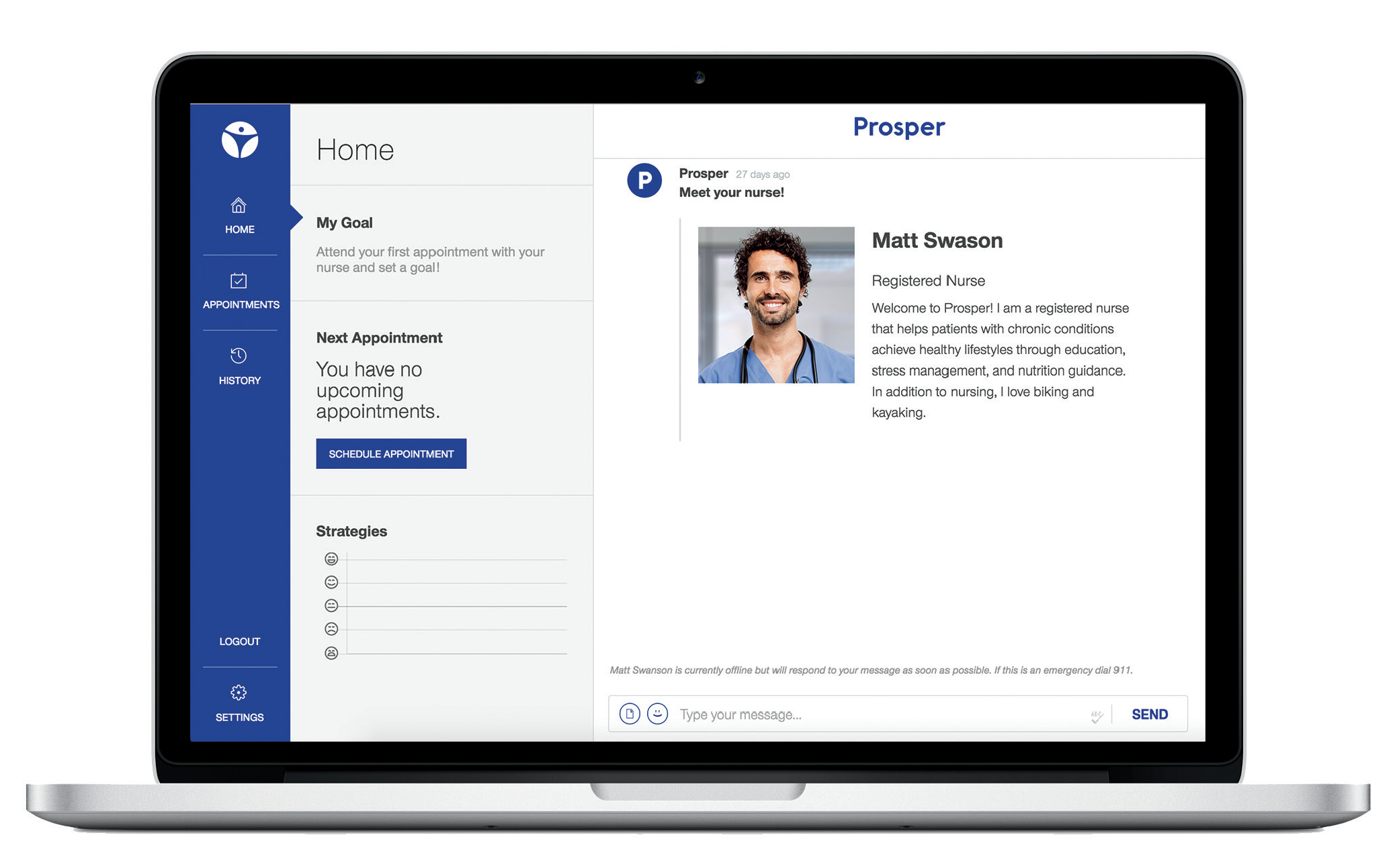
User Acceptance Testing is a method of launching a prototype to test the service design and all necessary tools. Before piloting with a client and using nurses to facilitate the service, we launched the platform under the name Prosper and the URL tryprosper.com, using a personal trainer to test the service. The behavior change challenges and program elements for personal training and chronic condition management are strongly correlated. Family and friends were instructed to sign up and work with the personal trainer and our team observed and interviewed to evaluate the product.
User Acceptance Testing Insights
A CLEAR ONBOARDING PROCESS IS VITAL to understanding the product and activating users.
PEOPLE RESPOND BEST when there are clear objectives for meetings.
PEOPLE NEED HELP ARTICULATING CLEAR and realistic goals and strategies. The coach should guide them and co-author goals and strategies with the member.
ALLOWING PEOPLE TO SCHEDULE THE FIRST MEETING with a coach themselves and fill out an assessment prior to the first visit is key to creating an efficient and effective relationship between member and coach.
Journey Maps
Design Statement
A friendly and approachable coaching platform for people recently diagnosed with a chronic condition to get support, learn strategies that work for them, and get control over their disease.
The design prioritizes ongoing chat with a nurse and allows for people to take greater ownership of their own health after progressing through the program.
The final outcome
Meet Prosper
Once a user gets their diagnosis we immediately jump into action and invite them into Prosper. In the platform I designed, a user can set up their profile and begin using the platform right away. I wanted a platform where users can:
- Learn more about their diagnosis with helpful articles written by trusted authors.
- A space to connect with a nurse at any time utilizing chat, voice, or video calls. Whatever is most convenient for you when you need help.
- A space to track and measure goals that are created with the assistance of a medical professional. I wanted to give people the tools to grow.

